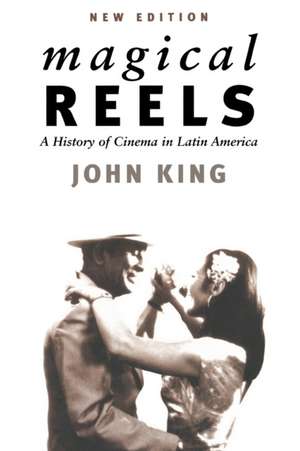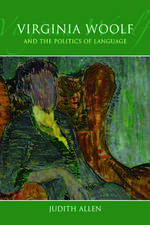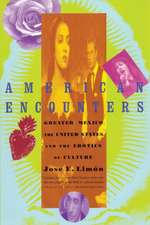Magical Reels: A History of Cinema in Latin America: Critical Studies in Latin American & Iberian Cultures
Autor John Kingen Limba Engleză Paperback – 31 aug 2000
John King sets up a historical framework to unfold the overlapping histories of cinema in the continent: the itinerant film-makers of the silent era who projected their films in cafes and village halls, the inventive use of vernacular music and local comedy in early sound pictures, the “golden age” of 1940s Mexican cinema, and the “new cinema”—oppositional cinema made “with an idea in the head and a camera in the hand”—of the late 1950s and beyond. A country-by-country account of this new wave allows detailed discussion of, for instance, Peronist cinema in Argentina, 1960s’ revolutionary film-making in Cuba, state-sponsored cinema in 1970s’ Brazil and Venezuela, and the struggle for democratization in Chile in the 1980s. A new chapter written for this edition examines Latin American cinema of the 1990s, raising issues such as globalization, new cinema audiences, film funding and distribution.
Preț: 147.88 lei
Nou
28.30€ • 30.73$ • 23.77£
Carte disponibilă
Livrare economică 01-15 aprilie
Specificații
ISBN-10: 185984233X
Pagini: 314
Dimensiuni: 156 x 235 x 18 mm
Greutate: 0.48 kg
Ediția:New
Editura: VERSO
Seria Critical Studies in Latin American & Iberian Cultures
Locul publicării:United Kingdom
Recenzii
Notă biografică
John King is Professor of Latin American Cultural History at the University of Warwick.
Descriere
Still the most comprehensive analysis of the subject to have appeared in English, Magical Reels charts the development of Latin American film industries in a world increasingly dominated by the advanced technology and massive distribution budgets of the North American mainstream.
John King sets up a historical framework to unfold the overlapping histories of cinema in the continent: the itinerant film-makers of the silent era who projected their films in cafes and village halls, the inventive use of vernacular music and local comedy in early sound pictures, the “golden age” of 1940s Mexican cinema, and the “new cinema”—oppositional cinema made “with an idea in the head and a camera in the hand”—of the late 1950s and beyond. A country-by-country account of this new wave allows detailed discussion of, for instance, Peronist cinema in Argentina, 1960s’ revolutionary film-making in Cuba, state-sponsored cinema in 1970s’ Brazil and Venezuela, and the struggle for democratization in Chile in the 1980s. A new chapter written for this edition examines Latin American cinema of the 1990s, raising issues such as globalization, new cinema audiences, film funding and distribution.





![John King - The Classical Ukulele Jumpin' Jim's Ukulele Masters Series Book/Online Audio [With CD (Audio)]](https://i4.books-express.ro/bt/9780634079795/john-king-the-classical-ukulele-jumpin-jim-s-ukulele-masters-series-book-online-audio-with-cd-audio.jpg)














